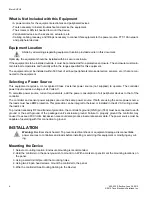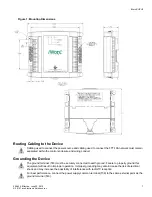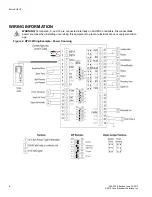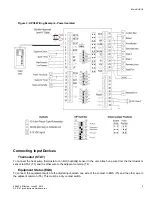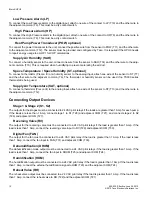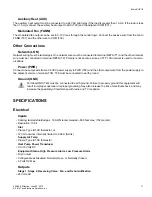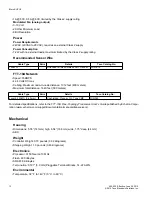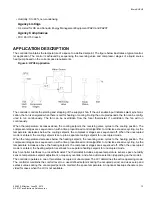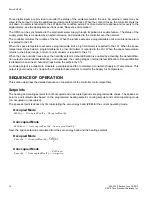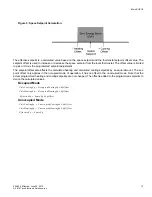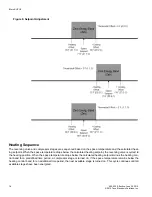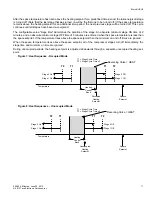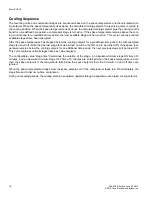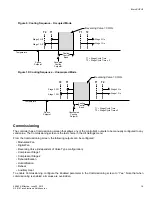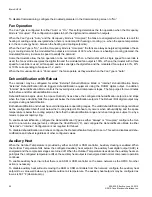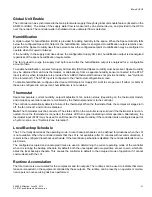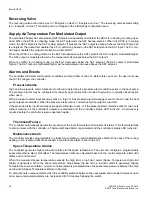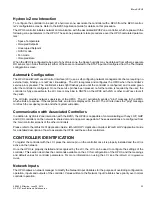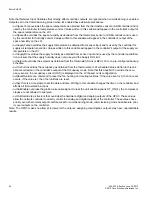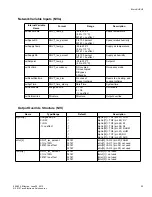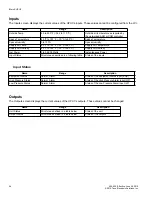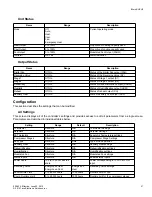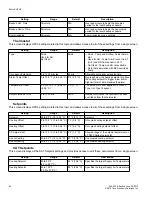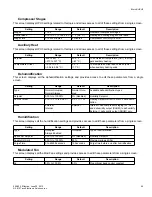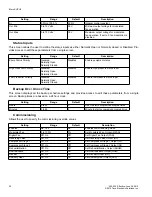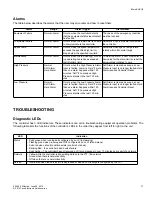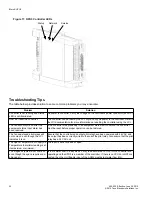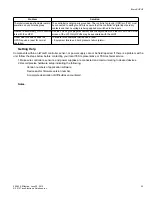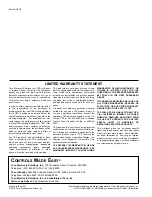
iWorx® HPU3
20
505-035, Effective: June 30, 2015
© 2015 Taco Electronic Solutions, Inc.
To disable Commissioning, configure the
Enabled
parameter in the Commissioning screen to “No.”
Fan Operation
The
Fan Type
is configured for either “Auto” or “On.” This setting determines the fan operation when the
Occupancy
Mode
is “Occupied.” This configuration applies to both the digital and modulated fan outputs.
When the
Fan Type
is “Auto,” and the
Occupancy Mode
is “Occupied,” the fans are energized when there is a call for
heating or cooling and de-energized when there is no demand for heating or cooling. (i.e. when the space temperature
is in the zero energy band - between the heating and cooling setpoints).
When the
Fan Type
is "On," and the
Occupancy Mode
is “Occupied,” the fans are always energized regardless of heat-
ing or cooling demand; the modulated fan output is a minimum of 33%; when there is a heating or cooling demand, the
modulated fan may increase in speed to satisfy the demand.
Some thermostats allow the fan operation to be overridden. When a thermostat with a single speed fan override is
used, the fan override energizes the digital fan and the modulated fan output is 100%. When a thermostat with a three
speed fan override is used, all fan speed overrides energize the digital fan and the modulated fan output is 33%, 67%
or 100% corresponding to fan speed 1, 2 and 3.
When the
Occupancy Mode
is “Unoccupied,” the fans operate as they would when the
Fan Type
is “Auto.”
Dehumidification with Reheat
The controller may be configured for either “External”
Dehumidification Mode
or “Internal”
Dehumidification Mode
.
“External”
Dehumidification Mode
triggers dehumidification equipment using the DHUM digital output. In addition,
“Internal”
Dehumidification Mode
controls the reversing valve and compressor stages. The fan purges for two minutes
both before and after dehumidification occurs.
Dehumidification begins when the
Space Humidity
rises above the configured dehumidification setpoint, and stops
when the
Space Humidity
falls three percent below the dehumidification setpoint. The Reheat (RH) digital output may
energize during dehumidification.
Both dehumidification and reheat have valid temperature operating ranges. The valid dehumidification range is defined
as the configurable
Shutoff Limit
below the
Cooling Setpoint
. Reheat only occurs when dehumidifying and the space
temperature is below the cooling setpoint. Note that the dehumidification range and reheat range are subject to a hys-
teresis to prevent rapid cycling.
To enable dehumidification, configure the
Dehumidification Type
as either “Always” or “Occupied,” configure the
Set-
point
to a non-zero value (percent), configure the
Shutoff Limit
(°F), and configure the
Dehumidification Mode
to either
“External” or “Internal.” Configuration is not required for
Reheat
.
To disable dehumidification and reheat, configure the
Dehumidification Setpoint
to zero. This action disables all dehu-
midification and reheat regardless of other configured values.
Auxiliary Heat
When the Outdoor Temperature is provided by either an ASM or CSM controller, Auxiliary Heating is enabled. When
the Outdoor Temperature falls below the configured auxiliary heat setpoint, the auxiliary heat digital output (AUX) is
energized and the compressor stages are turned off. When the Outdoor Temperature rises above the auxiliary heat set-
point plus the configured temperature offset, the auxiliary heat output is deenergized and normal compressor operation
continues.
To enable auxiliary heat, insure that there is an ASM or CSM controller on the same network as the HPU3. No other
action is necessary.
To disable auxiliary heat without removing the ASM or CSM controllers from the network, configure the auxiliary heat
setpoint to a value well below any possible outdoor air temperature. The auxiliary heat setpoint may be configured as
low as -459.7°F (absolute zero).

